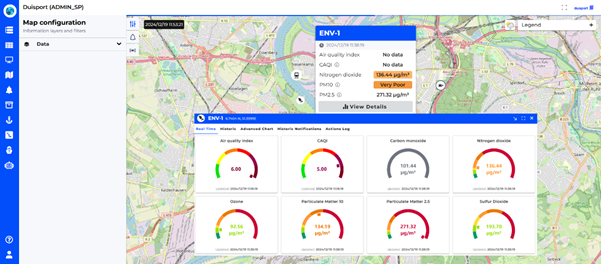Friday, January 3rd, 2025
Efficient and sustainable port management is essential in today’s interconnected logistics landscape. However, ports face challenges such as siloed data, inefficiencies in resource allocation and increasing environmental concerns. Addressing these needs, the Multimodal Node Digital Twin (DT) from the MultiRELOAD project, offers a solution. This advanced platform consolidates real-time and historical data into a central hub, enabling ports to optimise operations, improve decision-making, and reduce environmental impact. The DT is designed to streamline daily operations, monitor environmental factors, and provide predictive insights, meeting the growing demand for smarter, more sustainable port logistics.
What is the Multimodal Node Digital Twin?
The Digital Twin platform serves as a centralized support system for port management, offering a comprehensive view of relevant operational and environmental data. By integrating information from sensors, port systems, and external sources, it facilitates decision-making by providing real-time analytics and predictive tools. This solution enables:
Key features and benefits
Practical applications
Deployed in collaboration with stakeholders such as the Port of Duisport, the DT has demonstrated its potential to deliver operational and environmental management change:

The Multimodal Node Digital Twin illustrates the potential of digitalisation in port logistics. By improving transparency, efficiency and environmental performance, the platform not only addresses operational challenges but also contributes to the EU’s climate goals.
ALICE is part of the MultiRELOAD project, which highlights the role of collaboration and innovation in achieving a sustainable logistics sector. As digital twins become increasingly important, we invite stakeholders to explore how these technologies can improve port operations and beyond.
About MultiRELOAD project
The EU-funded project MultiRELOAD enhances multimodal freight transport by improving efficiency, sustainability, and collaboration at inland terminals. Targeting a 5% modal shift to rail and waterways and a 20% capacity boost by 2025, it leverages digitalisation, automation, and innovative models to align with the EU’s Smart Mobility Strategy.
